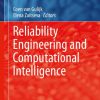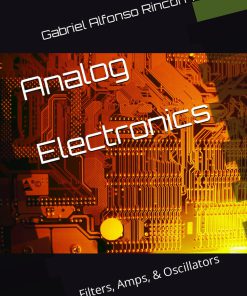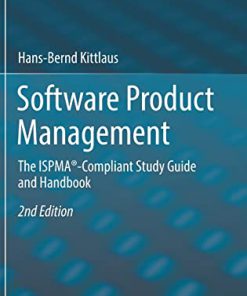Analog and Hybrid Computer Programming 2nd Edition by Bernd Ulmann ISBN 3110787881 9783110787887
$50.00 Original price was: $50.00.$25.00Current price is: $25.00.
Analog and Hybrid Computer Programming 2nd Edition by Bernd Ulmann – Ebook PDF Instant Download/Delivery: 3110787881, 9783110787887
Full dowload Analog and Hybrid Computer Programming 2nd Edition after payment

Product details:
ISBN 10: 3110787881
ISBN 13: 9783110787887
Author: Bernd Ulmann
As classic digital computers are about to reach their physical and architectural boundaries, interest in unconventional approaches to computing, such as quantum and analog computers, is rapidly increasing. For a wide variety of practical applications, analog computers can outperform classic digital computers in terms of both raw computational speed and energy efficiency. This makes them ideally suited a co-processors to digital computers, thus forming hybrid computers. This second edition of “Analog and Hybrid Computer Programming” provides a thorough introduction to the programming of analog and hybrid computers. It contains a wealth of practical examples, ranging from simple problems such as radioactive decay, harmonic oscillators, and chemical reaction kinetics to advanced topics which include the simulation of neurons, chaotic systems such as a double-pendulum simulation and many more. In addition to these examples, it contains a chapter on special functions which can be used as “subroutines” in an analog computer setup.
Analog and Hybrid Computer Programming 2nd Table of contents:
1 Introduction
1.1 What is an analog computer?
1.2 Direct vs. indirect analogies
1.3 A short history of analog computing
1.4 Characteristics of analog computers
2 Computing elements
2.1 Machine units
2.2 Summer
2.3 Integrators
2.4 Free elements
2.5 Potentiometers
2.6 Function generators
2.7 Multiplication
2.8 Comparators and switches
2.9 Input/output devices
3 Analog computer operation
4 Basic programming
4.1 Radioactive decay
4.1.1 Analytical solution
4.1.2 Using an analog computer
4.1.3 Scaling
4.2 Harmonic functions
4.3 Sweep
4.4 Mathematical pendulum
4.4.1 Straightforward implementation
4.4.2 Variants
4.5 Mass-spring-damper system
4.5.1 Analytical solution
4.5.2 Using an analog computer
4.5.3 RLC-circuit
5 Special functions
5.1 Stieltjes integral
5.2 Inverse functions
5.2.1 Square root
5.2.2 Division
5.3 f(t) = 1/t
5.4 Powers and polynomials
5.5 Low pass filter
5.6 Triangle/square wave generator
5.7 Ideal diode
5.8 Absolute value
5.9 Limiters
5.10 Dead zone
5.11 Hysteresis
5.12 Maximum and minimum
5.13 Bang-bang
5.14 Minimum/maximum holding circuits
5.15 Sample & Hold
5.16 Time derivative
5.17 Time delay
5.17.1 Historic approaches to delay
5.17.2 Digitization
5.17.3 Sample and hold circuits
5.17.4 Analog delay networks
5.18 Transfer functions
5.19 Exponentially mapped past
6 Examples
6.1 Displaying polynomials
6.2 Chemical kinetics
6.3 SEIR model
6.4 Damped pendulum with external force
6.5 Mathieu’s equation
6.6 Van der Pol’s equation
6.7 Generating Bessel functions
6.8 Solving the one-dimensional Schrödinger equation
6.9 Ballistic trajectory
6.10 Charged particle in a magnetic field
6.11 Rutherford-scattering
6.12 Celestial mechanics
6.13 Bouncing ball
6.14 Zombie apocalypse
6.15 Rössler attractor
6.16 Lorenz attractor
6.17 Another Lorenz attractor
6.18 Chua attractor
6.19 Nonlinear chaos
6.20 Aizawa attractor
6.21 Nosé-Hoover oscillator
6.22 The SQM model
6.23 The Duffing oscillator
6.24 Rotating spiral
6.25 Generating an Euler spiral
6.26 Hindmarsh-Rose model
6.27 Simulating the flight of a glider
6.28 Flow around an airfoil
6.29 Heat transfer
6.30 Two-dimensional heat transfer
6.31 Systems of linear equations
6.32 Human-in-the-loop
6.33 Inverted pendulum
6.34 Elastic pendulum
6.35 Double pendulum
6.36 Making Music
6.37 Neutron kinetics
6.38 Smooth sorting
7 Hybrid computing
7.1 Hybrid controllers
7.2 Basic operation
7.3 Shell trajectory
7.4 Data gathering
7.5 Training an AI with an analog computer
7.6 Hybrid solution of systems of linear equations
7.7 Solving PDEs with random walks
8 Summary and outlook
A The Laplace transform
A. 1 Basic functions
A. 1.1 Step function
A. 1.2 Delta function
A. 1.3 Ramp function
A. 1.4 Exponential and trigonometric functions
A. 2 Laplace transforms of basic operations
A. 3 Further characteristics
A. 4 Inverse Laplace transform
A. 5 Example
A. 6 Block diagrams and transfers functions
B Solving the heat equation with a passive network
C A simple hybrid controller for THE ANALOG THING
D An oscilloscope multiplexer
E A log() function generator
F A sine/cosine generator
G A simple joystick interface
H The Analog Paradigm bus system
I HyCon commands
Bibliography
Index
People also search for Analog and Hybrid Computer Programming 2nd:
analog and hybrid computer programming
hybrid analog digital computer
analog computer programming
analog hybrid digital computer
You may also like…
Engineering - Electrical & Electronic Engineering
Analog Electronics: Filters, Amps, & Oscillators 2nd Edition Rincón-Mora
Computers - Programming
Computer graphics programming in OpenGL with C 2nd Edition V Scott Gordon
Computers - Computer Science
An Introduction to Programming and Computer Science with Python First Edition Clayton Cafiero
Biology and other natural sciences - Zoology
Engineering - Computer Technology
Computers - Computer Graphics & Design
Analog Computing De Gruyter Textbook 2nd Edition by Bernd Ulmann 311078761X 9783110787610
Uncategorized
Concepts of Computer and C Programming 2nd Edition M.K. Sharma Dr. Krishan Kumar Goyal
Computers - Computer Science
Analog Computing De Gruyter Textbook 2nd Edition Bernd Ulmann











